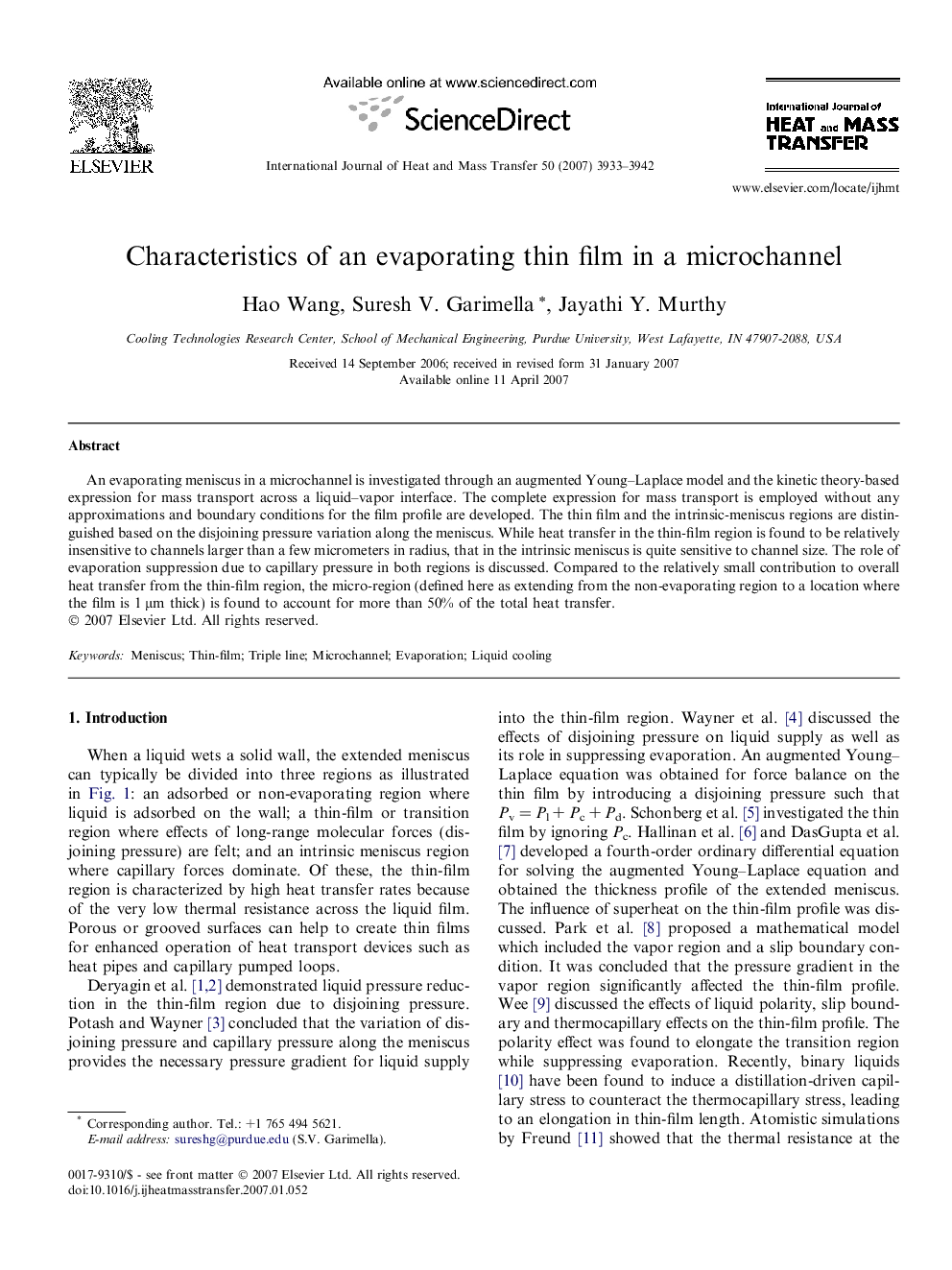| Article ID | Journal | Published Year | Pages | File Type |
|---|---|---|---|---|
| 663076 | International Journal of Heat and Mass Transfer | 2007 | 10 Pages |
An evaporating meniscus in a microchannel is investigated through an augmented Young–Laplace model and the kinetic theory-based expression for mass transport across a liquid–vapor interface. The complete expression for mass transport is employed without any approximations and boundary conditions for the film profile are developed. The thin film and the intrinsic-meniscus regions are distinguished based on the disjoining pressure variation along the meniscus. While heat transfer in the thin-film region is found to be relatively insensitive to channels larger than a few micrometers in radius, that in the intrinsic meniscus is quite sensitive to channel size. The role of evaporation suppression due to capillary pressure in both regions is discussed. Compared to the relatively small contribution to overall heat transfer from the thin-film region, the micro-region (defined here as extending from the non-evaporating region to a location where the film is 1 μm thick) is found to account for more than 50% of the total heat transfer.
